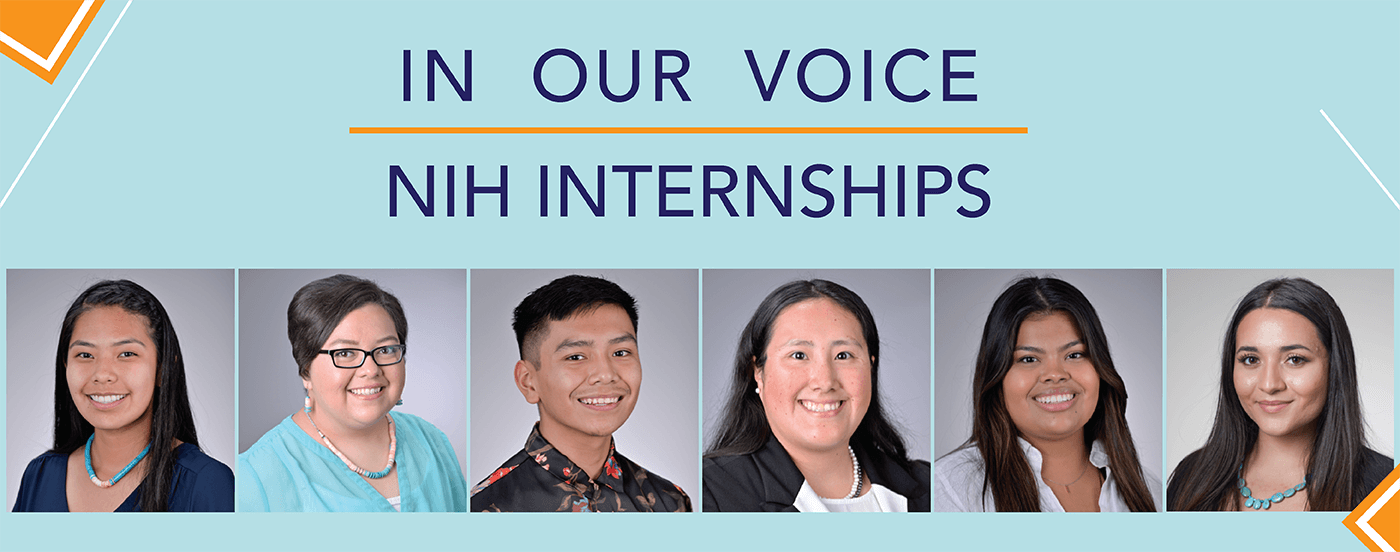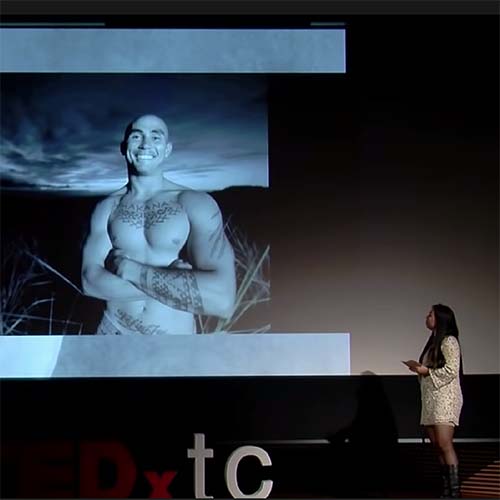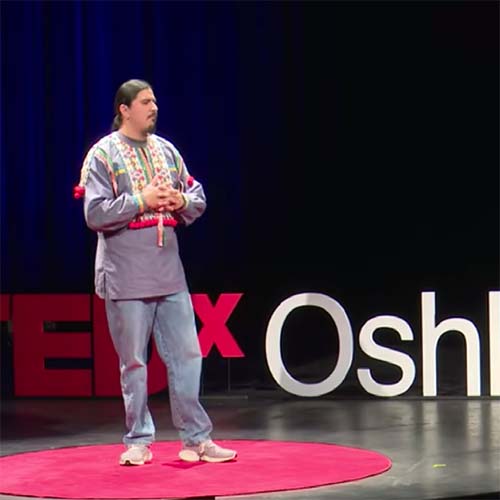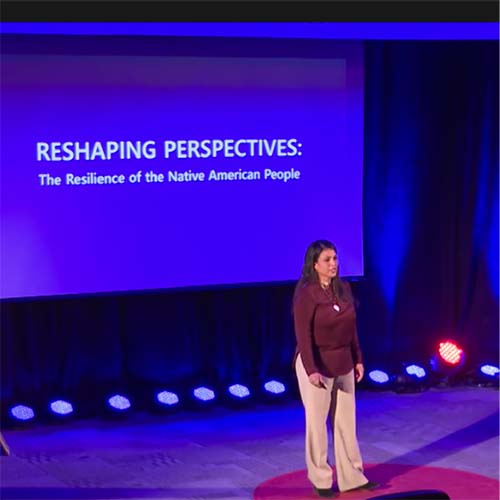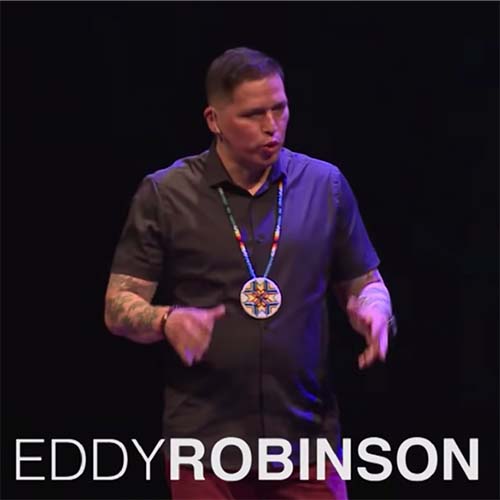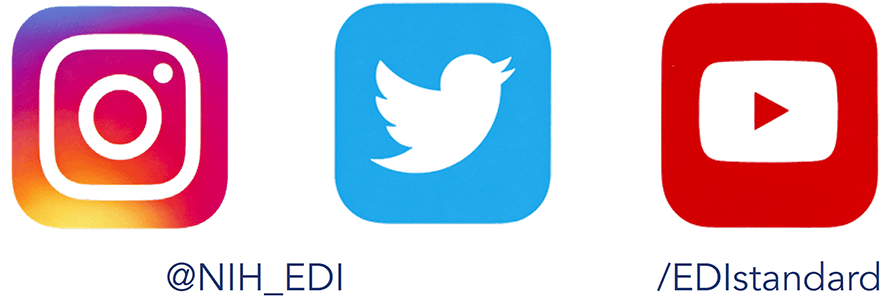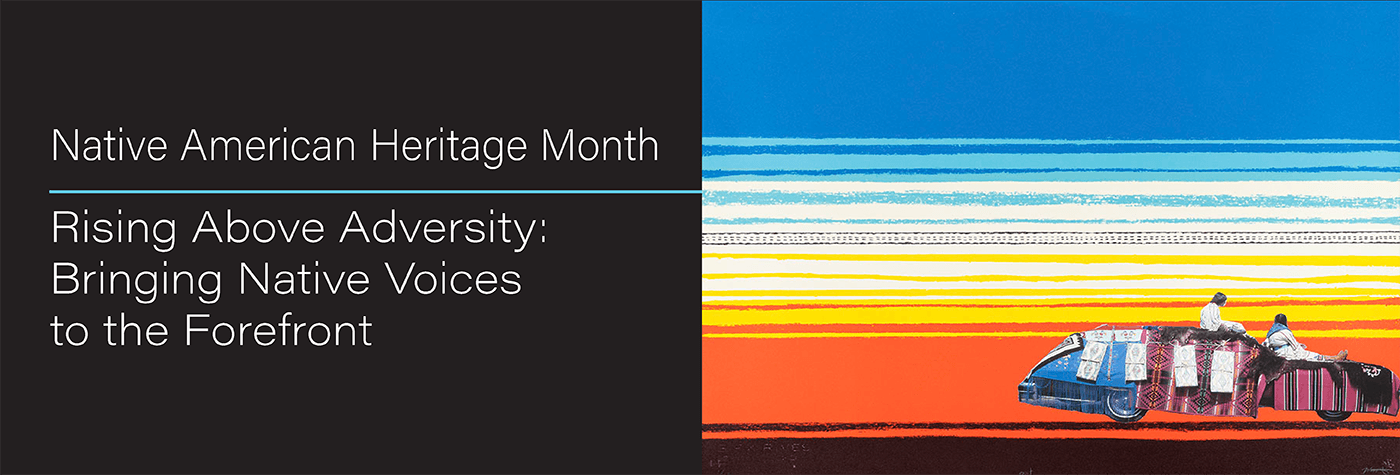
Solidarity
/ sälə’derədē/ unity or agreement of feeling or action, especially among young individuals with a common interest; mutual support within a group.
Contemporary
/ kən’tempə rerē/ belonging to or occurring in the present.
Brave
/ brāv/ ready to face and endure danger or pain; showing courage.
The National Institutes of Health celebrates National Native American Heritage Month during November as part of a commitment to the principles of equity, diversity, inclusion, and accessibility in our research and workplace. During this month we pay tribute to the many contributions made by Native Americans. Our hope in the Office of Equity, Diversity, and Inclusion is to continue to acknowledge the contributions of Native Americans and work to help eliminate discrimination throughout the year.
Advocacy
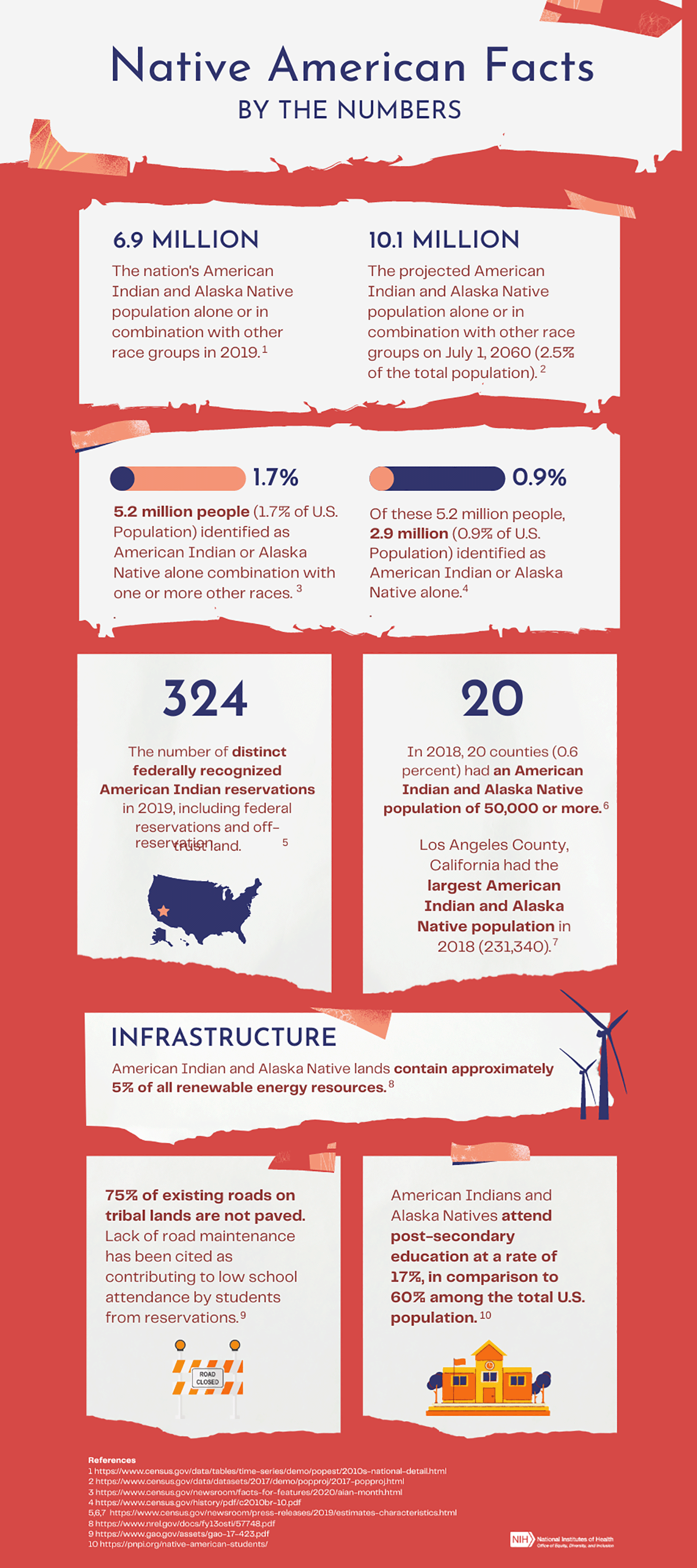
Native American Facts
Native American Facts by the numbers; 6.9 MILLION The nation's American Indian and Alaska Native population alone or in combination with other race groups in 2019; 10.1 MILLION The projected American Indian and Alaska Native population alone or in combination with other race groups on July 1, 2060 (22.5%of the total population). 5.2 million people (1.7% of U.S. Population) identified as American Indian or Alaska Native alone. 2.9 million people (0.9% of U.S. Population) identified as American Indian or Alaska Native alone. 324 The number of distinct federally recognized American Indian reservations in 2019, including federal reservations and off-reservation trust land. 20 In 2018, 20 counties (0.6percent) had an American Indian and Alaska Native population of 50,000 or more; Los Angele s County, California had the largest American Indian and Alaska Native population in 2018 (231,340). 75% of existing roads on tribal lands are not paved. Lack of road maintenance has been cited as contributing to low school attendance by students from reservations. American Indians and Alaska Natives attend post-secondary education at a rate of 17%, in comparison to 60% among the total U.S. population. References: https://www.census.gov; https://www.census.gov; https://www.census.gov; https://www.census.gov; https://www.census.gov; ; https://www.gao.gov; https://pnpi.org; NIH logo
Print/Download this infographic as a PDF.
Allyship
EDI Blogs
Activities & Events
-
12:00 PM - 1:00 PM ET
Event Host: The Office of Equity, Diversity, and Inclusion (EDI)
The purpose of this event is to consider leadership, meaningful engagement, long-term impact, and community support as critical elements in allyship. This panel will be composed of a diverse group of speakers willing to share best practices, personal experiences, and suggestions with the audience on how to be the most effective ally in action.
Featuring
- Melody Delmar, Health Science Policy Analyst, Tribal Health Research Office
- Roland Owens, Director of Research Workforce Development, OIR
- Susannah Allison, Program Officer at National Institute of Mental Health
- Baldwin Wong, Chief of the Science Policy and Planning Branch (SPPB), National Institute on Deafness and Other Communications Disorders (NIDCD)
-
12:00PM - 12:45 PM ET
Event Host: The Office of Equity, Diversity, and Inclusion (EDI), Office of Human Resources (OHR), and National Institute of Environmental Health Sciences (NIEHS)
This interactive virtual discussion offers students and faculty an opportunity to meet NIH professionals and learn more about NIH internships and job opportunities. Jenn Evans, an alumni from the University of Chapel Hill, joins us from the National Institute of Environmental Health Sciences (NIEHS). She will share her story, career highlights, and experience transitioning to the NIH from college through the Workforce Recruitment Program. John Schelp will provide an overview of NIEHS and Kyle Hartwig from the Office of Human Resources will share information on NIH internships. Additionally, the discussion will end with a Q&A session.
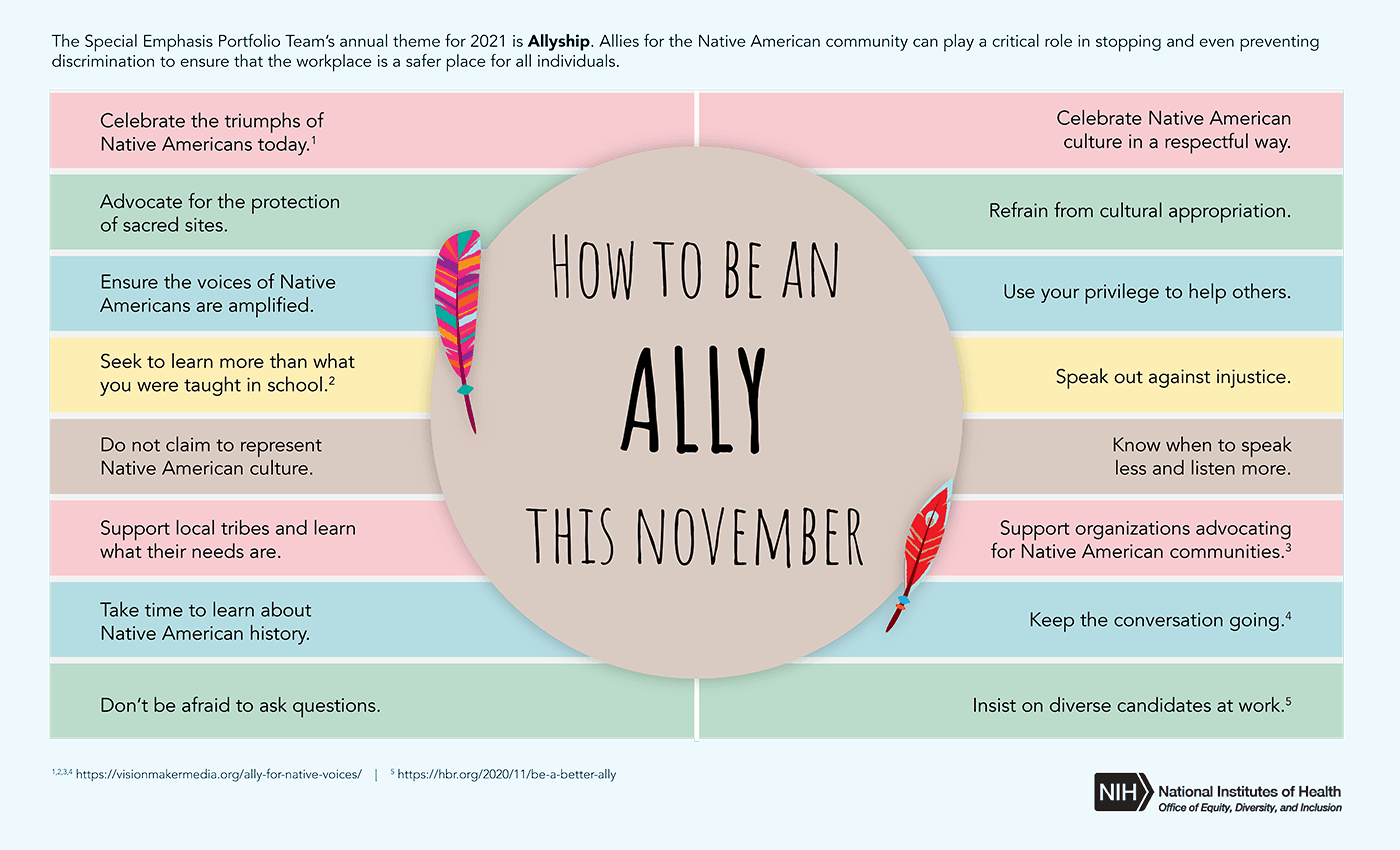
How To be an Ally this November
How to be an ALLY this November; The Special Emphasis Portfolio Team’s annual theme for 2021 is Allyship. Allies for the Native American community can play a critical role in stopping and even preventing discrimination to ensure that the workplace is a safer place for all individuals. Celebrate the triumphs of Native Americans today. Advocate for the protection of sacred sites. Ensure the voices of Native Americans are amplified. Seek to learn more than what you were taught in school. Do not claim to represent Native American culture. Support local tribes and learn what their needs are. Take time to learn about Native American history. Don’t be afraid to ask questions. Celebrate Native American culture in a respectful way. Refrain from cultural appropriation. Use your privilege to help others. Speak out against injustice. Know when to speak less and listen more. Support organizations advocating for Native American communities. Keep the conversation going.4Insist on diverse candidates at work. https://visionmakermedia.org; https://hbr.org; NIH logo
Print/Download this infographic as a PDF.
More Resources
Matika Wilbur
TEDxTeachersCollege
Ron (Muqsahkwat) Corn, Jr.
TEDxOshkosh
Lorraine Davis
TEDxUMary
Eddy Robinson
TEDxStMaryCSSchool
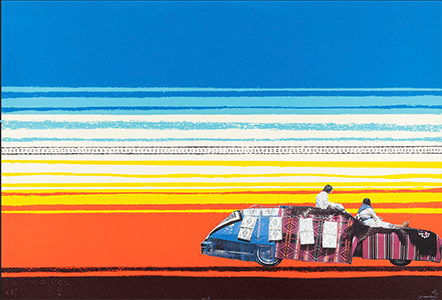
About the hero image.
This month’s hero image includes a brilliant lithograph created by Wendy Red Star (Apsáalooke (Crow), b. 1981), enit, 2010. The six-color lithograph on paper with chine collé archival pigment ink photograph was acquired with funds provided by the Humana Foundation Endowment for American Art. 2011.030.007. © Wendy Red Star.
The artwork is featured in Revisions: Contemporary Native Art, an exhibition that focuses on strategies of revision, reuse, and appropriation in contemporary Native art. The participating artists—who hail from diverse backgrounds, tribes, and generations—share an interest in the circulation and reconfiguration of forms over time, across space, and between cultures. Some address the appropriation of Native culture by settler society, while others repurpose found objects, images, and texts from tribal history, family archives, and popular culture. In media ranging from print to textile to video, their works reflect on and reshape issues of inheritance, colonization, authenticity, and the politics of representation.
Revisions: Contemporary Native Art brings together objects from the Snite Museum collection and selected loans, including works by artists from the local Pokagon Band of Potawatomi.1





